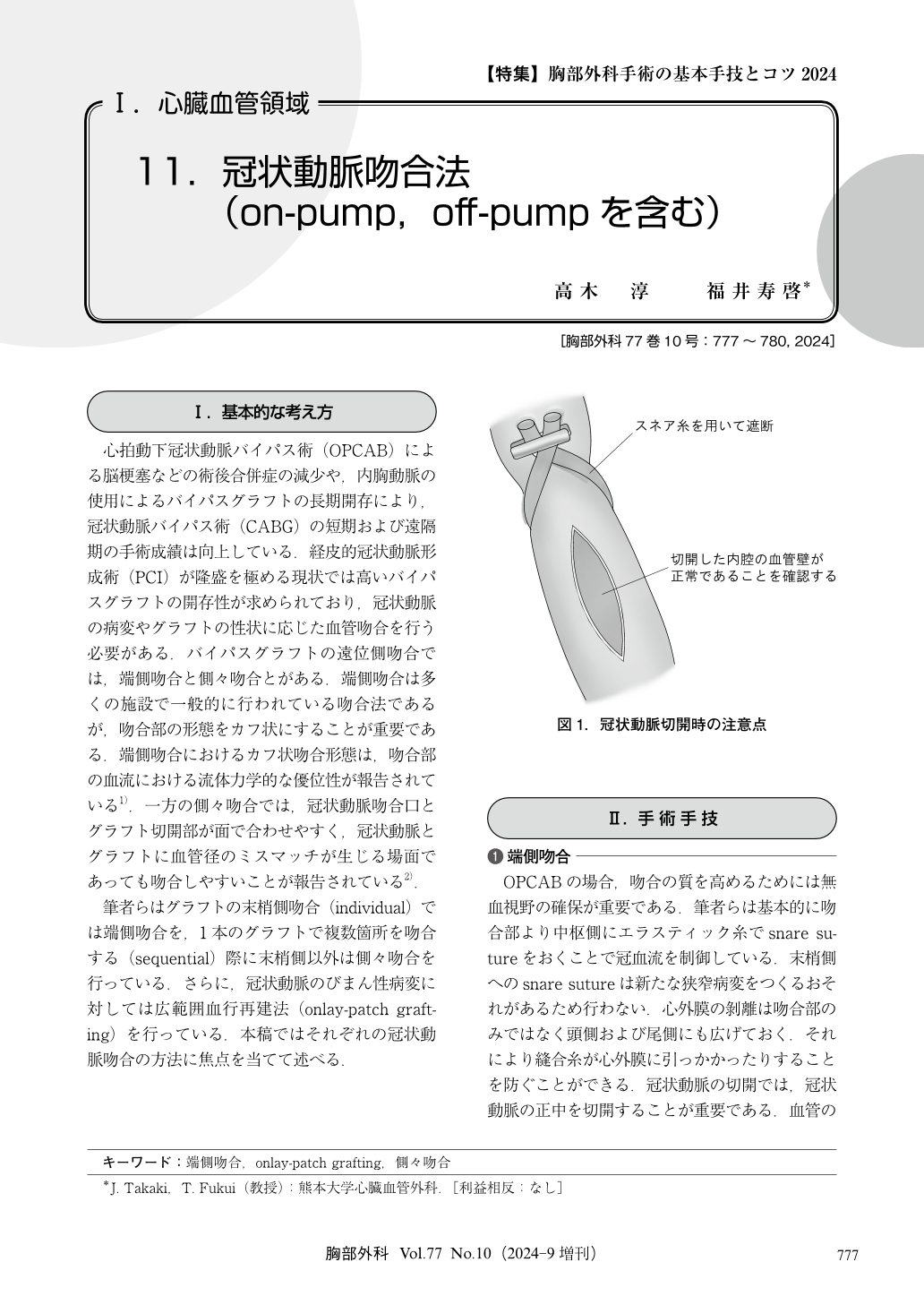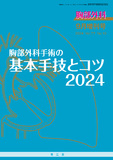Japanese
English
- 有料閲覧
- Abstract 文献概要
- 1ページ目 Look Inside
- 参考文献 Reference
心拍動下冠状動脈バイパス術(OPCAB)による脳梗塞などの術後合併症の減少や,内胸動脈の使用によるバイパスグラフトの長期開存により,冠状動脈バイパス術(CABG)の短期および遠隔期の手術成績は向上している.経皮的冠状動脈形成術(PCI)が隆盛を極める現状では高いバイパスグラフトの開存性が求められており,冠状動脈の病変やグラフトの性状に応じた血管吻合を行う必要がある.バイパスグラフトの遠位側吻合では,端側吻合と側々吻合とがある.端側吻合は多くの施設で一般的に行われている吻合法であるが,吻合部の形態をカフ状にすることが重要である.端側吻合におけるカフ状吻合形態は,吻合部の血流における流体力学的な優位性が報告されている1).一方の側々吻合では,冠状動脈吻合口とグラフト切開部が面で合わせやすく,冠状動脈とグラフトに血管径のミスマッチが生じる場面であっても吻合しやすいことが報告されている2).
In recent years, percutaneous coronary intervention (PCI) has been performed for left main trunk lesions and severe three-vessel lesions, which were previously considered indications for coronary artery bypass grafting (CABG). As a result, more patients with poorer general conditions or vascular characteristics are being considered for CABG. In the current era of PCI, surgeons are required to achieve high bypass graft patency and to perform anastomosis according to the coronary artery lesion and the characteristics of the bypass graft. There are two types of distal anastomosis for bypass grafts:end-to-side and side-to-side. End-to-side anastomosis is a commonly used method in many institutions. Because the cuff-like anastomotic morphology of the end-to-side anastomosis has been reported to have a hydrodynamic advantage in blood flow at the anastomotic site, end-to-side anastomosis needs to be cuff-shaped. On the other hand, side-to-side anastomosis is reported to be easier to anastomose even when there is a mismatch in vessel diameter between the coronary artery and the bypass graft because the coronary artery incision and the bypass graft incision are more easily aligned in plan. In addition, extensive revascularization (onlay-patch grafting) is used for diffuse lesions in the coronary arteries. This section focuses on each method of coronary anastomosis.

© Nankodo Co., Ltd., 2024


